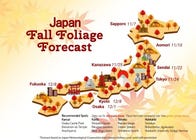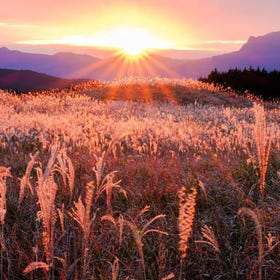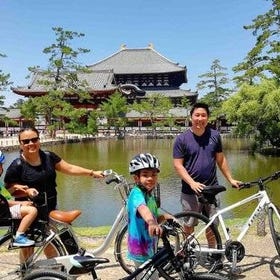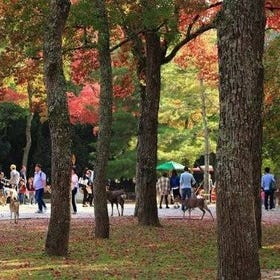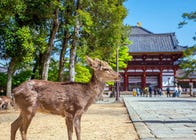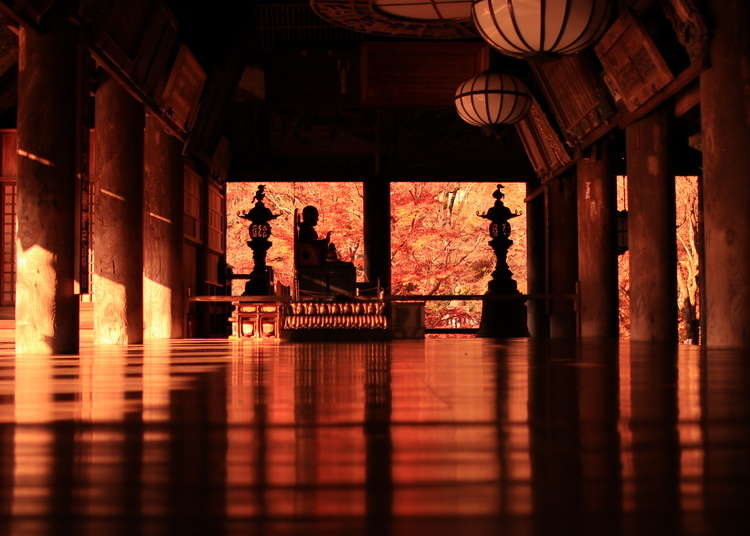
Nara is renowned for its legendary fall foliage! Witnessing the transformation of leaves into a symphony of colors is one of the most delightful aspects of autumn. The ancient capital of Nara is packed with spots to enjoy Japan’s renowned beauty.
From around mid-October, leaves in Nara will gradually change color, transforming Nara Park, Mt. Yoshino, and dozens of other historic shrines, temples, and mountains into the ultimate locations to experience the dazzling spectacle of autumn in 2023!
- Table of Contents
-
- What is the best time to see fall colors in Nara?
- 1. Nara Park: Spot Hundreds of Local Deer Among the Fall Foliage in Nara
- 2. Isuien Garden – Fall in Love with Fall Foliage in Nara at Two Different Japanese Gardens
- 3. Tanzan Shrine: Nara’s Most Famous Autumn Spot
- 4. Hasedera Temple: A Breathtaking Amalgamation of Autumn Color
- 5. Mount Yoshino: As Beautiful in Autumn as Spring
- 6. Shoryaku-ji Temple: The ‘Village of Brocade’
- 7. Muroji Temple: Enjoy Stunning Fall Colors in an Ancient Monastery
- 8. Chogaku-ji Temple: One of Japan’s Top 100 Foliage Spots
- 9. Chogosonshi-ji Temple: Vivid Reds Transform This Deeply Historic Mountain
- 10. Mitarai Valley: The Most Beautiful in Nara!
- Autumn tours to Nara
What is the best time to see fall colors in Nara?
While Kyoto is often in the foliage spotlight, you won't want to miss autumn colors in Nara, which is about half an hour south of Kyoto. The best time to see fall colors in Nara is from late November to early December.
1. Nara Park: Spot Hundreds of Local Deer Among the Fall Foliage in Nara
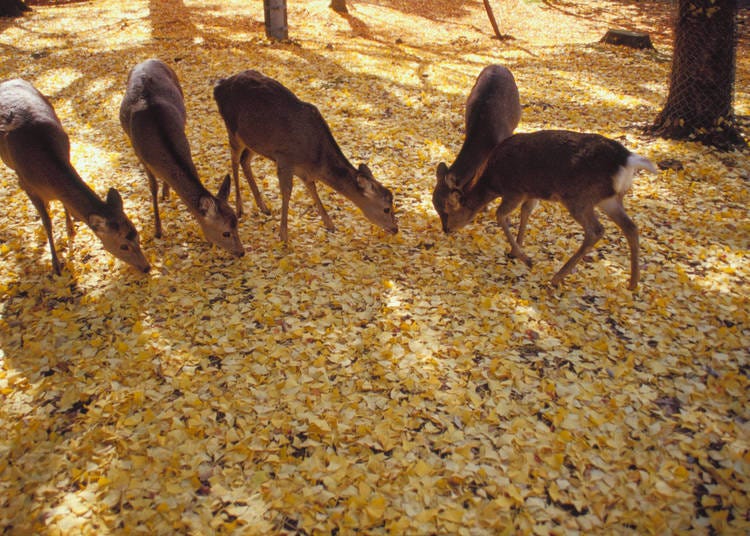
Nara Park can be found on the east side of Nara City. Spanning a whopping four kilometers east-west and two kilometers north-south, this natural park is home to hundreds of deer and several of Nara's famous shrines and temples - including Kasuga-taisha Shrine, Kofuku-ji Temple, and Todai-ji Temple.
It also holds the Shoso-in storehouse, where the numerous treasures held inside are exhibited every year from the end of October to the beginning of November.
Nara Park’s stunning fall foliage provides a captivating contrast between its numerous evergreen trees. As autumn lines up with Shoso-in’s treasure exhibition, the area becomes packed with sightseers, so do plan ahead!
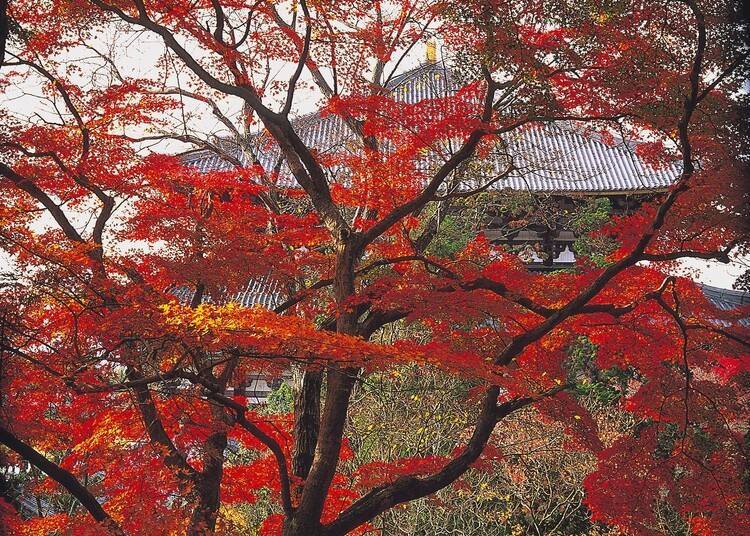
The best photo spots in Nara Park are here!
If you’re after a winning autumn photo, the spacious grounds of Todai-ji Temple are packed with highly photogenic fall leaves! The scene is best captured from across the Daibutsu-Ike Pond, where the burning red colors can be contrasted against the muted hues of the Great Buddha Hall.
Of course, you’ll also want to get a photo of the deer framed by autumn leaves! For this, we recommend heading to Tobihino or Kasuga-taisha Shrine. Passionate photographers should also check out Sagiike Pond and the eye-catching hexagonal Ukimi-do hall standing in its water.
-
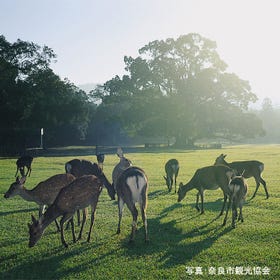
-
Address
The area covering Kasugano-cho, Zoshin-cho, Takabatake-cho, and Noborioji-cho in Nara, Nara, 630-0000
View Map -
Nearest Station
Kintetsunara Station (Kintetsu-nara Line)
5 minutes on foot
- Phone Number 0742-22-0375
-
Address
The area covering Kasugano-cho, Zoshin-cho, Takabatake-cho, and Noborioji-cho in Nara, Nara, 630-0000
2. Isuien Garden – Fall in Love with Fall Foliage in Nara at Two Different Japanese Gardens
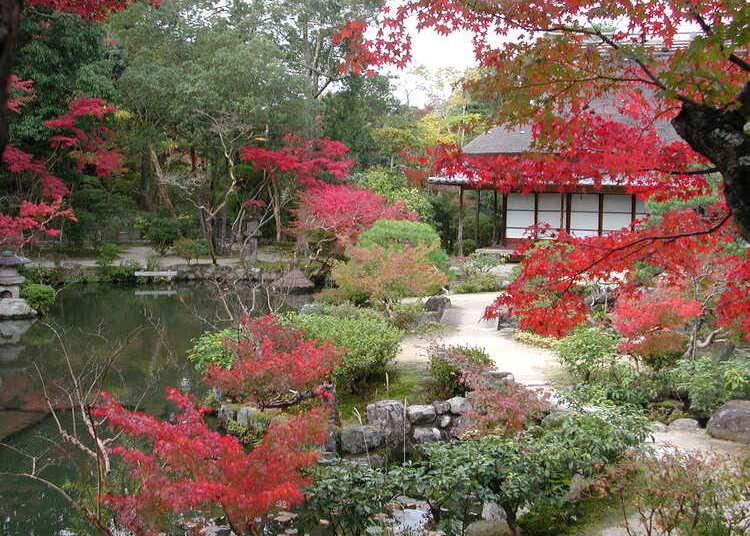
The glorious Isuien Garden is nestled between two of Nara’s most important temples - Todai-ji Temple and Kofuku-ji Temple.
The front section of Isuien Garden, constructed in the early Edo period, and the inner garden, added during the Meiji Restoration, both feature tranquil ponds encircled by a path perfect for relaxing strolls. For the keen eye, their subtle differences in construction brilliantly highlight the trends of their respective eras.
These Japanese gardens have become an international hit thanks to their design and expansive layout. You’ll love strolling around the grounds and enjoying the natural scenery.
While standard photos of the area frame the garden’s glorious autumn colors from the traditional Sanshu-tei restaurant, our recommended angle is from the front of the pond with Sanshu-tei as the background.
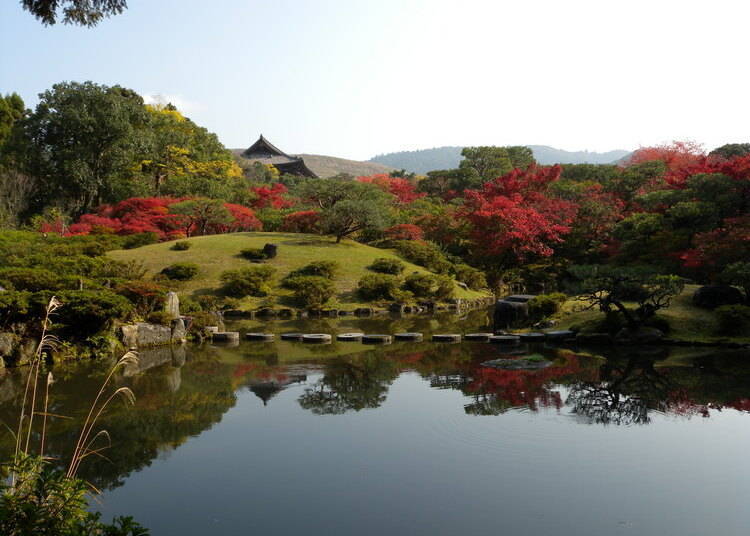
Best photo spot: The ‘kouen’ inner garden, constructed during the Meiji period
From the right side of the inner garden are sweeping views Mt. Mikasa, Mt. Kasuga Okuyama, Mt. Wakakusa, and Todai-ji’s Nandai Gate.
The best time to enjoy autumn colors at Isuien Garden is from mid to late November, when it is decorated with spectacular red foliage!
-
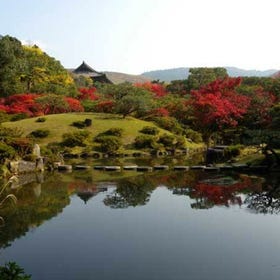
-
Address
74, Suimoncho, Nara-shi, Nara, 630-8208
View Map -
Nearest Station
Kintetsunara Station (Kintetsu-nara Line)
11 minutes on foot
- Phone Number 0742-25-0781
-
Address
74, Suimoncho, Nara-shi, Nara, 630-8208
3. Tanzan Shrine: Nara’s Most Famous Autumn Spot
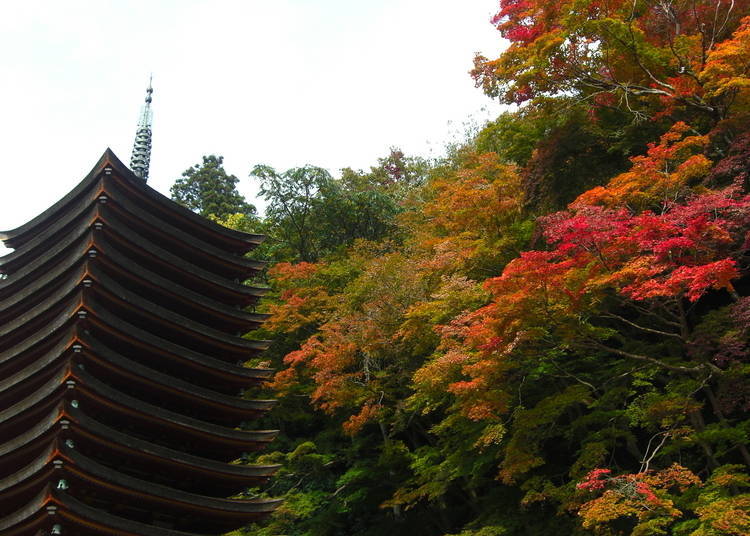
Tanzan Shrine, which deifies the founder of the Fujiwara Clan, Fujiwara no Kamatari, is in a lavishly forested area renowned across Kansai for its colors - and is among the best fall foliage in Nara.
Here the legendary Fujiwara discussed and planned the Taika Reformation with the man who would become Emperor Tenji. The shrine was thus nicknamed ‘Katarai Yama,’ meaning ‘the mountain of discussion,’ which evolved into its current name, written using the characters for ‘discuss’ and ‘mountain.’
Within the grounds is a shrine said to be the original model for the World Heritage Nikko Tosho-gu shrine in Tochigi, along with the one-and-only existing wooden thirteen-story pagoda and 17 other impressive buildings, all designated important cultural properties.
During autumn, over 3000 trees bury the mountains in a red blaze, making it appear like a scene from a painting. Seeing the famous pagoda and shrine buildings rising out of the sea of red illuminated by the sunlight is breathtaking.
The best time to enjoy the autumn colors at Tanzan Shrine is generally from mid-November to the beginning of December.
-
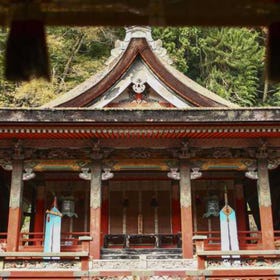
-
Address
319, Tounomine, Sakurai-shi, Nara, 633-0032
View Map -
Nearest Station
Sakurai Station (Kintetsu-osaka Line)
25 minutes by bus
- Phone Number 0744-49-0001
-
Address
319, Tounomine, Sakurai-shi, Nara, 633-0032
4. Hasedera Temple: A Breathtaking Amalgamation of Autumn Color
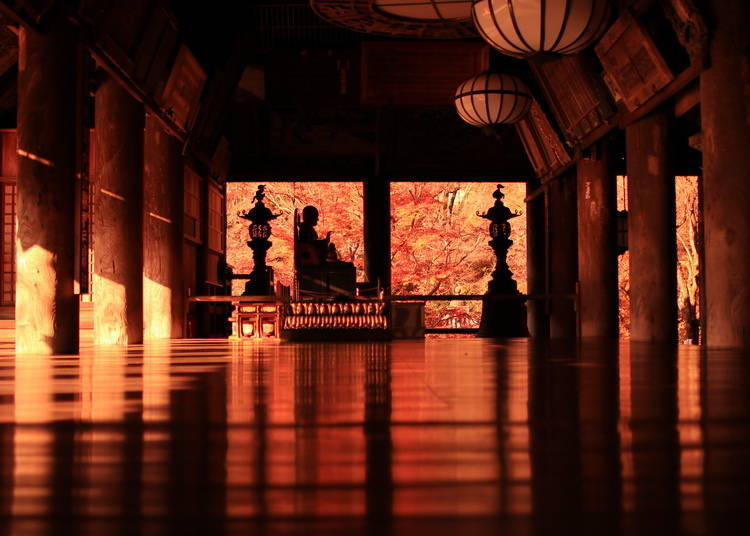
Mt. Hase presents sweeping views of the Hase highway, an ancient vein that once connected the Yamato and Ise Provinces.
It is also home to Hasedera Temple, one of the 33 sacred centers on the Saigoku Kannon Pilgrimage and the head temple of the Buzan-ha Buddhist sect.
This temple holds the largest wooden 11-faced Kannon statue in Japan - which is a whopping 10-meters tall! This sacred representation of Kannon has her standing on a pedestal while holding a staff in her right hand and a jug of water in her left, which has since become known as ‘Hasedera-style.’
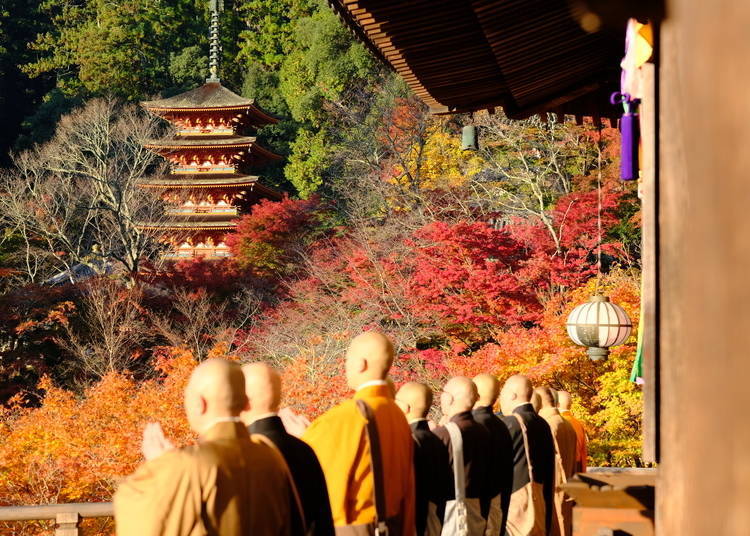
Hasedera Temple has long been called ‘The Temple of Flowers’ due to its stunning floral surroundings that include elegant foliage in autumn.
While the area’s beauty is boundless, we recommend viewing the scene from the outside decking of the main temple building, which is a designated national treasure. From here, you can see spectacular views of the 5-story pagoda in an ocean of red leaves. The best time to visit Hasedera Temple for foliage is mid-November.
-
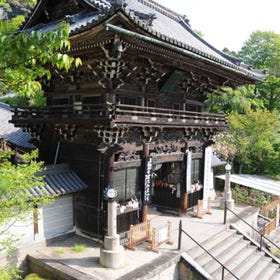
-
Address
731-1 Hatsuse, Sakurai City, Nara Prefecture, 633-0112
View Map -
Nearest Station
Hasedera Station (Kintetsu-osaka Line)
15 minutes on foot
- Phone Number 0744-47-7001
-
Address
731-1 Hatsuse, Sakurai City, Nara Prefecture, 633-0112
5. Mount Yoshino: As Beautiful in Autumn as Spring
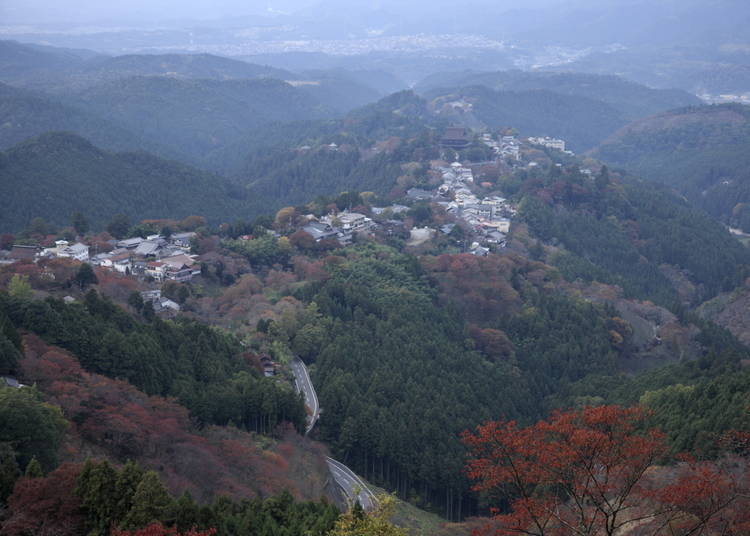
Mt. Yoshino is known as a contender for Japan’s most beautiful cherry blossom hotspot. However, this impressive region, which is not just a single mountain but a roughly 7-kilometer range running from the Aonegamine mountain to the bank of the Yoshino River, also puts on a fantastic autumn display!
Contrasting spring colors, autumn covers the region with stark reds, yellows, and oranges. From late October to late November, these colors will slowly creep down the mountain, starting from the very top and finishing at the bottom, creating breathtaking views at this incredibly scenic spot for fall foliage in Nara.
-
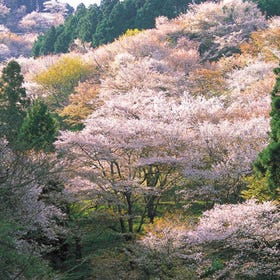
-
Address
Yoshinoyama, Yoshino-cho, Yoshino-gun, Nara, 639-3115
View Map -
Nearest Station
Yoshino Station (Kintetsu-yoshino Line)
- Phone Number 0746-39-9237
-
Address
Yoshinoyama, Yoshino-cho, Yoshino-gun, Nara, 639-3115
6. Shoryaku-ji Temple: The ‘Village of Brocade’
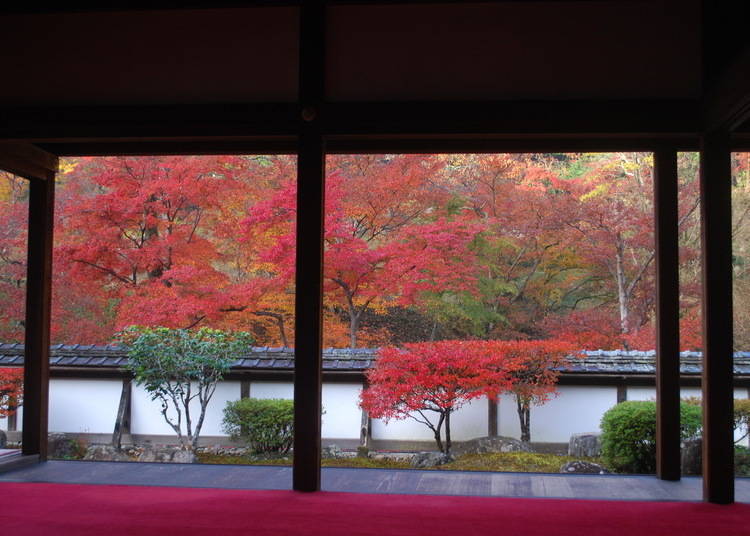
The construction of Shoryaku-ji Temple was ordered by Emperor Ichijo and carried out by high Buddhist priest Kenjun, the child of famed Japanese politician Fujiwara no Kaneie.
The temple lies among the mountains in the suburbs of Nara City and is surrounded by more than 3000 maple trees that gradually change color from the beginning of November.
The treetops are a mix of green, yellow, and red, creating an enchanting blend said to be reminiscent of intricately woven brocade fabric - thus earning the nickname ‘Village of Brocade.’
From around the same time until the end of winter, over 1000 shrubs of nandina lining the shrine path bear red berries, adding extra brightness to the fiery display!
The main temple holds a special public event from the beginning of November, where a statue of the normally concealed ‘Medicine Buddha’ is unveiled to the public. The autumn views overlooking the garden from nearby Fukujuin are also spectacular.
-
Shoryaku-ji正暦寺
- Address 157 Bodaisencho, Nara, 630-8413
-
Nearest Station
Access: 20-minutes via taxi from Tenri Station on the JR Sakarai Line or the Kintetsu Tenri Line. (During peak autumn a temporary bus runs direct from Nara Station on the JR Yamatoji Line and Kintetsu Nara Station on the Kintetsu Nara Line).
- Phone Number 0742-62-9569
・Hours: 9 AM - 4 PM (From November 3 to the first Sunday in December, closes at 5 PM)
・Admission: 500 yen (Special viewing: 800 yen)
7. Muroji Temple: Enjoy Stunning Fall Colors in an Ancient Monastery
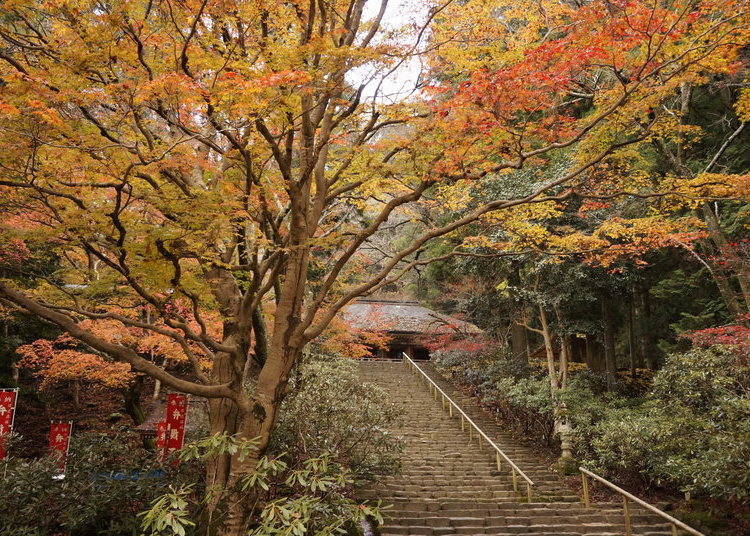
Muroji Temple is a mountain monastery of Shingon Buddhism originally established during the Nara era by monk Kenkyou of Kofuku-ji before being rebuilt by Kukai.
Even long ago, the monastery welcomed female worshipers, with women from all over the area congregating to pray. It thus earned the nickname ‘The Mt. Koya for Women.’
Besides being the home of numerous cultural heritage items, this historic monastery’s lavish surroundings beget stunning views throughout the seasons.
The fantastic autumn colors at Muroji Temple peak from mid-November to the beginning of December, and can be appreciated from dozens of viewing points.
Most prominent is the shrine road, which begins with an arched bridge at the entrance and finishes at a 5-story pagoda, along with the steep steps of the magical Yoroizaka.
-
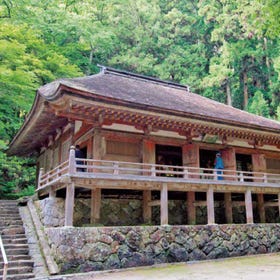
-
Address
78, Muro, Uda-shi, Nara, 633-0421
View Map -
Nearest Station
Muroguchiono Station (Kintetsu-osaka Line)
15 minutes by bus
- Phone Number 0745-93-2003
-
Address
78, Muro, Uda-shi, Nara, 633-0421
8. Chogaku-ji Temple: One of Japan’s Top 100 Foliage Spots
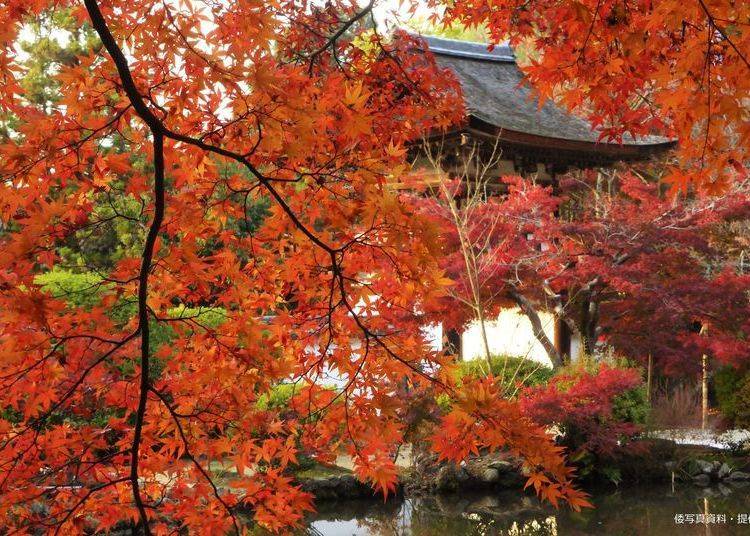
Constructed at the wish of Emperor Junna by the famed monk Kukai, Chogaku-ji is an ancient temple sitting on a mountain pass. The temple’s spacious 4 hectares hold Japan’s oldest bell tower gate and many other national treasures, along with a pleasing array of year-round colorful flowers!
Chogaku-ji’s renowned fall colors finally earned the recognition they deserved through their inclusion in Japan’s official ‘Top 100 Foliage Spots.’
There’s nowhere better to appreciate its magnificence than from the main temple’s veranda, which overlooks the entire scene. During the season for fall foliage in Nara, the mighty ‘Painting of Hell’ (a designated ‘Cultural Property of Nara’) is exhibited, complimented by periodic explanations by the head priest. The peak time for autumn colors at Chogaku-ji Temple is mid to late November.
-
Chogaku-ji Temple長岳寺
- Address 508 Yanagimotocho, Tenri-shi, Nara 632-0052
-
Nearest Station
Access: A 20-minute walk from Yanagimoto Station on the JR Sakarai Line. You can also take a 14-minute bus ride (62-line Tenri – Sakarai) from Tenri Station on the Kintetsu Tenri Line or from Sakarai Station on the JR Sakarai Line or Kintetsu-Osaka Line. The temple is an 8-minute walk from the Yanagimoto or Uenagaoka bus stops.
- Phone Number 0743-66-1051
・Hours: 9 AM – 5 PM
・Admission: 400 yen
9. Chogosonshi-ji Temple: Vivid Reds Transform This Deeply Historic Mountain
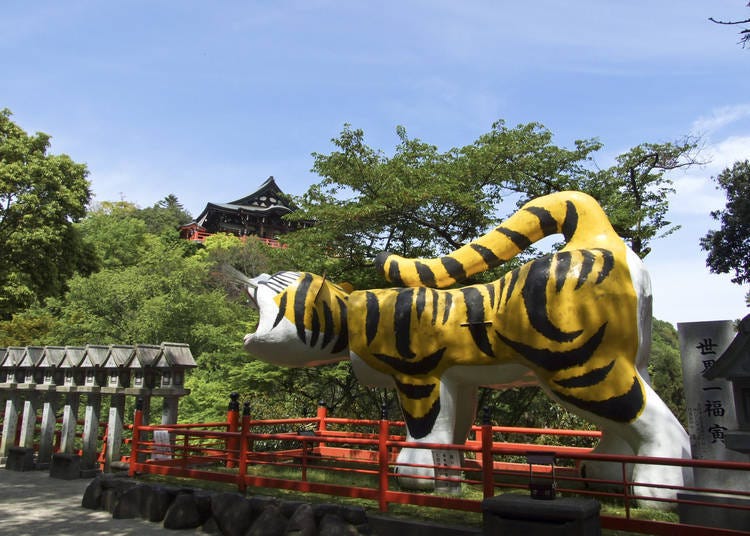
Halfway up Mt. Shigi (437m) is Chogosonshi-ji Temple. Named from Japanese phrases meaning ‘you must believe, you must respect,’ this mountain bears the legend of Bishamonten’s first appearance in Japan.
One of the four heavenly kings and an important figure in Japanese Buddhism, Bishamonten is said to have appeared before Prince Shotoku and led him to the battlefield. This miracle occurred during the hour of the tiger, on the day of the tiger, in the year of the tiger.
This resulted in the temple’s reverence of tigers, believed to be a god of protection. Now the shrine’s symbol, various paper-mâché ‘lucky tigers,’ not seen anywhere else in the world, can be spotted throughout the temple grounds!
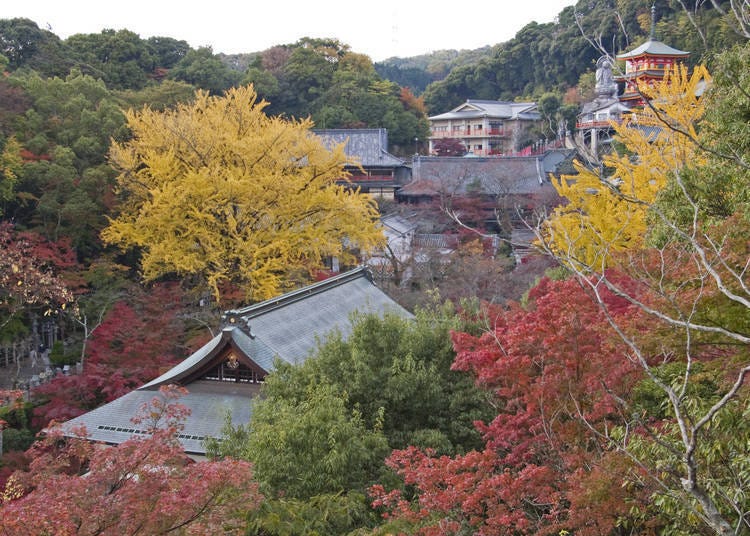
Once autumn rolls around, gorgeous multicolored leaves dominate the temple grounds and surrounding mountains.
To see over 1000 Japanese maple trees at their brightest, visit between early November to early December.
-
Chogosonshi-ji Temple朝護孫子寺
- Address 2280-1 Shigisan, Heguri, Ikoma-gun, Nara 636-0923
-
Nearest Station
Access: Take a bus heading towards Shigisan-mon from Oji Station, which is on the JR Yamato Line or Kintetsu Ikoma Line. After around 22 minutes, get off at the Shigi Ohashi bus stop. From here the temple is a 5-minute walk.
- Phone Number 0745-72-2277
・Hours: 9 AM – 5 PM (admission until 4:30 PM)
・Admission: Free
10. Mitarai Valley: The Most Beautiful in Nara!
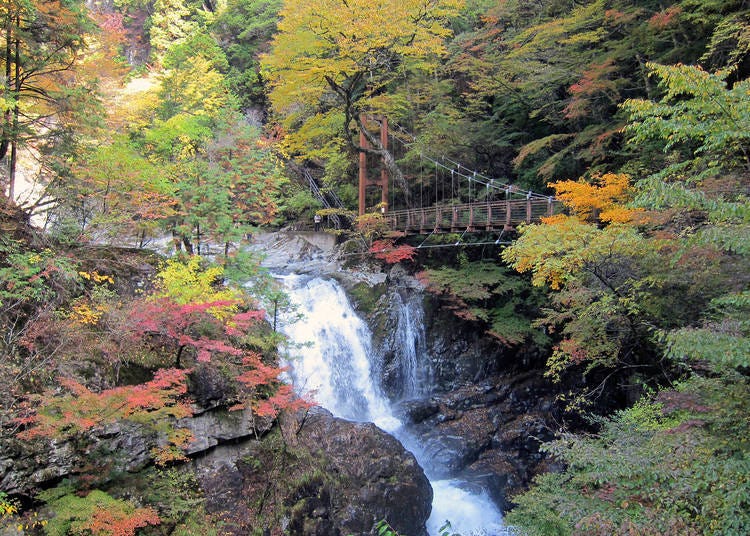
The beauty of the Mitarai Valley’s dozens of waterfalls and boulders is heightened by its transparent emerald-green water. This year-round beauty is only surpassed during autumn, whereby the depth and variety of color are multiplied by the various species of maple trees that slowly change color beginning from the valley’s peak.
Everywhere you look, your vision will be dominated by the dynamic combination of brilliant autumn leaves, majestic waterfalls, and fascinating boulders! Definitely don’t miss out on crossing the suspension bridge in the Mitarai Valley Promenade, which provides the best views by far! Peak autumn colors are generally in mid-November.
-
Mitarai Valleyみたらい渓谷
- Address Kitozumi, Tenkawa, Yoshino-gun, Nara 638-0303
-
Nearest Station
Access: Take the bus bound for Dorogawa Onsen or Nakaiosumi from Shimoichiguchi Station on the Kintetsu Yoshino Line. After an approximately 60-minute bus ride, get off at Tenkawa Kawai. The gorge is an approximately 45-minute walk from there.
・TEL: 0747-63-0999 (Tenkawamura Information Center), 0747-63-0321 (Tenkawamura Local Administration)
・Admission: None
・Visitors are free to enter as they please
Autumn tours to Nara
Now you know ten spots for fall foliage in Nara - we hope we’ve given you enough inspiration to make your autumn Japan trip one to remember!
This list is comprehensive, reaching from the streets of Nara City to the dense forests of Tenkawa, so you now know as much as the locals do! To top it off, Nara’s deep history as the ancient capital of Japan means its temples have deep autumn traditions, providing even more reason to visit during this fantastic season!
Don’t forget to check out online about light-up events and other fun activities held during this time.
*This article was originally published in June 2020
and updated in August 2023. Please refer to official websites for the latest information.
Written by:

- Area
- Category
*Prices and options mentioned are subject to change.
*Unless stated otherwise, all prices include tax.
Limited time offer: 10% discount coupons available now!
Recommended places for you
-
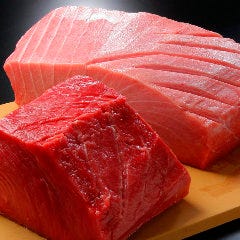
Kamesushi Sohonten
Sushi
Umeda, Osaka Station, Kitashinchi
-
Goods

Yoshida Gennojo-Roho Kyoto Buddhist Altars
Gift Shops
Nijo Castle, Kyoto Imperial Palace
-

Jukuseiniku-to Namamottsuarera Nikubaru Italian Nikutaria Sannomiya
Izakaya
Kobe, Sannomiya, Kitano
-
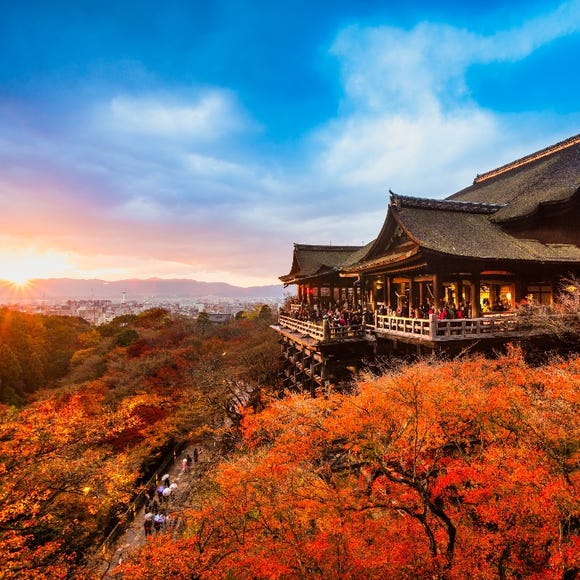
Kiyomizu-dera Temple
Temples
Gion, Kawaramachi, Kiyomizu-dera Temple
-
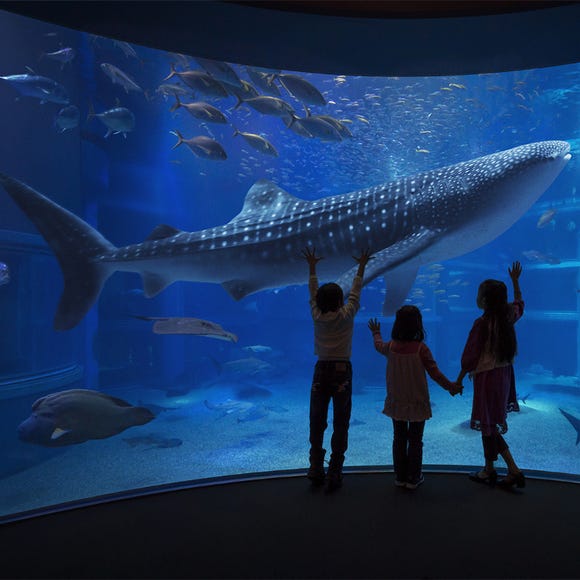
Osaka Aquarium KAIYUKAN
Zoos, Aquariums & Botanical Gardens
USJ, Nanko Port
-
Menu
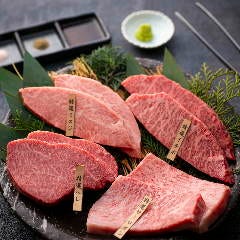
ISHIDAYA Hanare
Yakiniku
Kobe, Sannomiya, Kitano
-
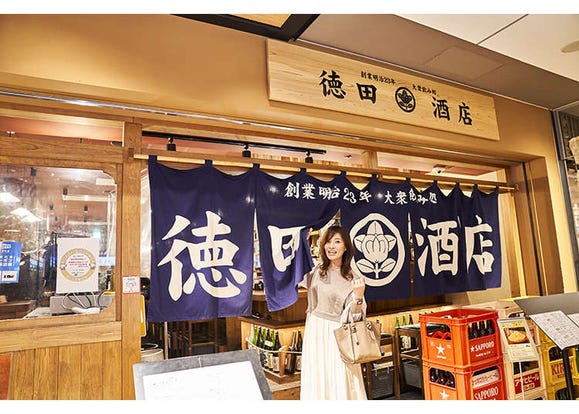
Enjoy the Enchanting World of Osaka Station City: Solo-Friendly Bar-Hopping!
-
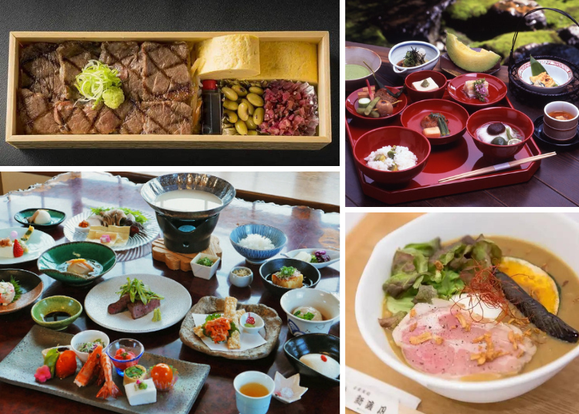
18 Must-Try Restaurants in Arashiyama: Savor Everything from Classic Cuisine to Trendy Cafés with Scenic Backdrops
-
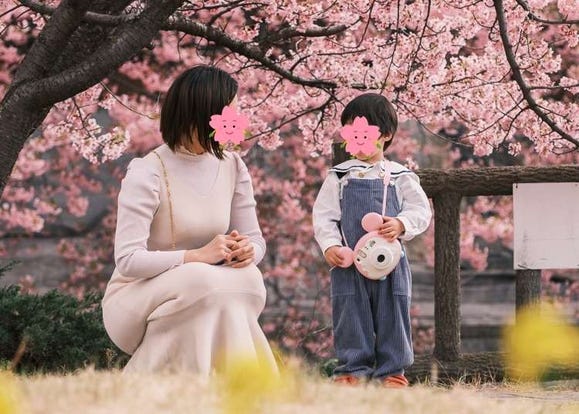
Taking Mom and Dad on a Trip to Osaka: How to Have Fun, Tips, Must-See Spots, and a 5-Day Itinerary
-

Make the Most of 'Universal Cool Japan' (2024 Guide) - Detective Conan, Monster Hunter & More
-
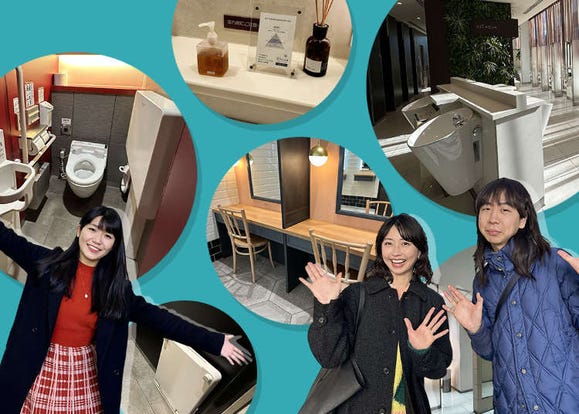
Comfy Toilet Map for Osaka Station: Can You Get Around with a Stroller? Are There Clean Powder Rooms?
-
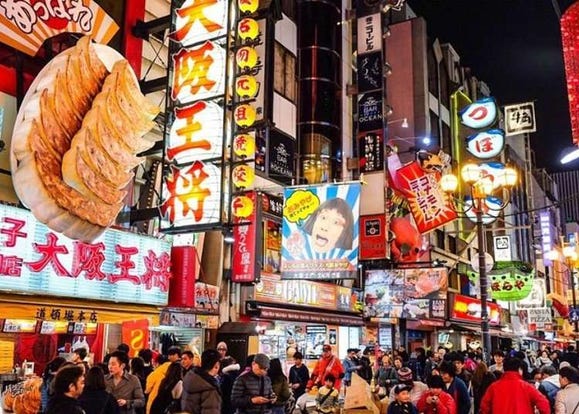
14 Unique & Fun Osaka Food Tours to Enjoy in 2024
-
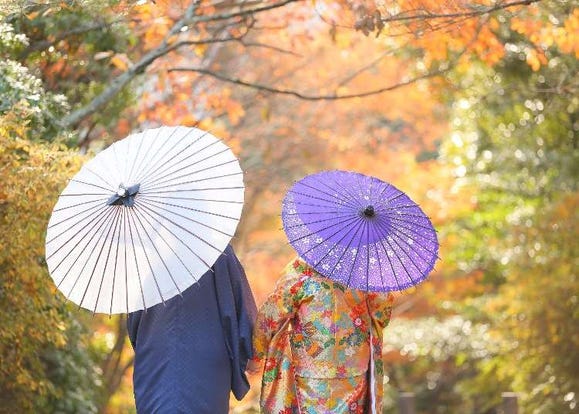
What is Momijigari? All About Japan's Fascinating Autumn 'Leaf-Hunting' Tradition
-

Why Osaka Tennoji Zoo is So Popular with Foreign Tourists (Guide & Highlights)
-
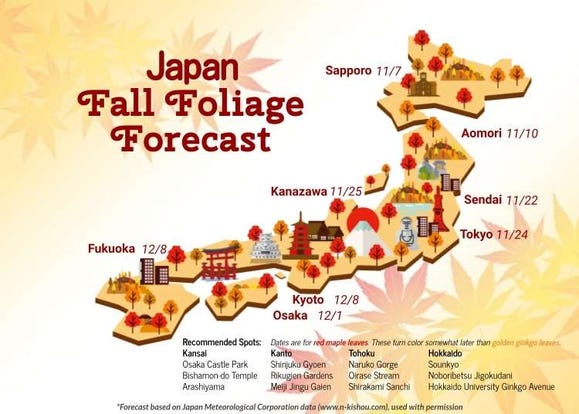
Autumn in Japan 2024: Fall Foliage Forecast & Where to Enjoy the Colorful Leaves (+Tour Info)
-
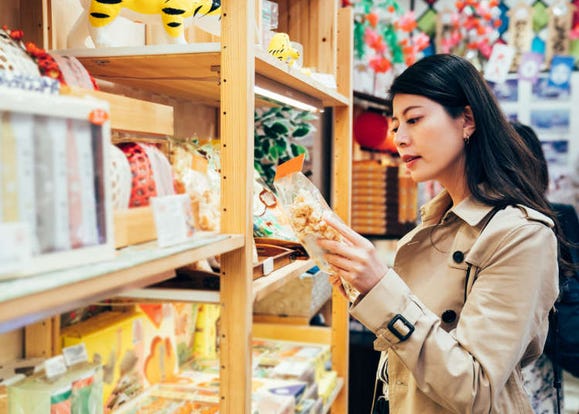
6 Surprisingly Cheap Things in Japan
-
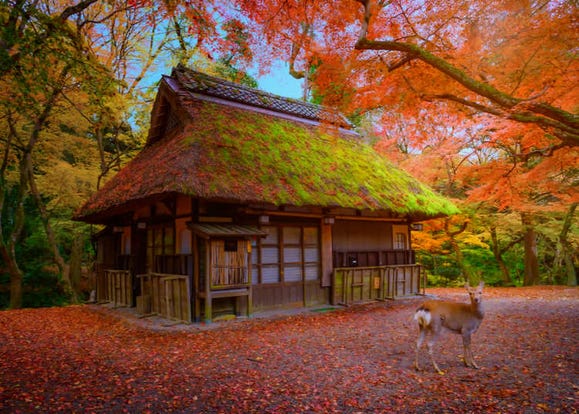
Nara Momiji: 5 Famous Places for Colorful Fall Foliage in Japan's City of Deer
-
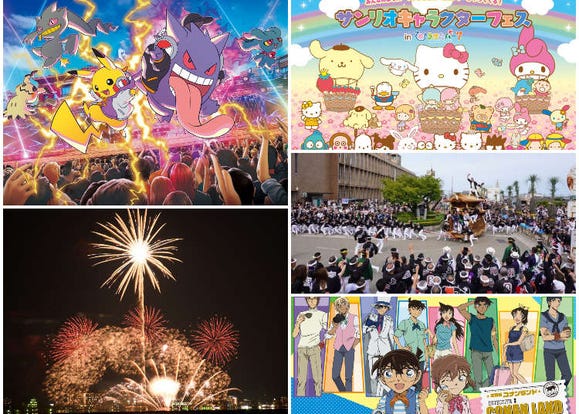
What to Do in Osaka & Kyoto in September 2023: Kishiwada Danjiri Festival, USJ Halloween & More Fun Events
- #best gourmet Osaka
- #things to do Osaka
- #what to do in kyoto
- #what to bring to japan
- #best gourmet Kyoto
- #new years in Osaka
- #what to buy in nanba
- #Visiting Osaka
- #onsen tattoo friendly arima
- #daiso
- #Visiting Kyoto
- #best japanese soft drinks
- #japanese fashion culture
- #japanese convenience store snacks
- #japanese nail trends













